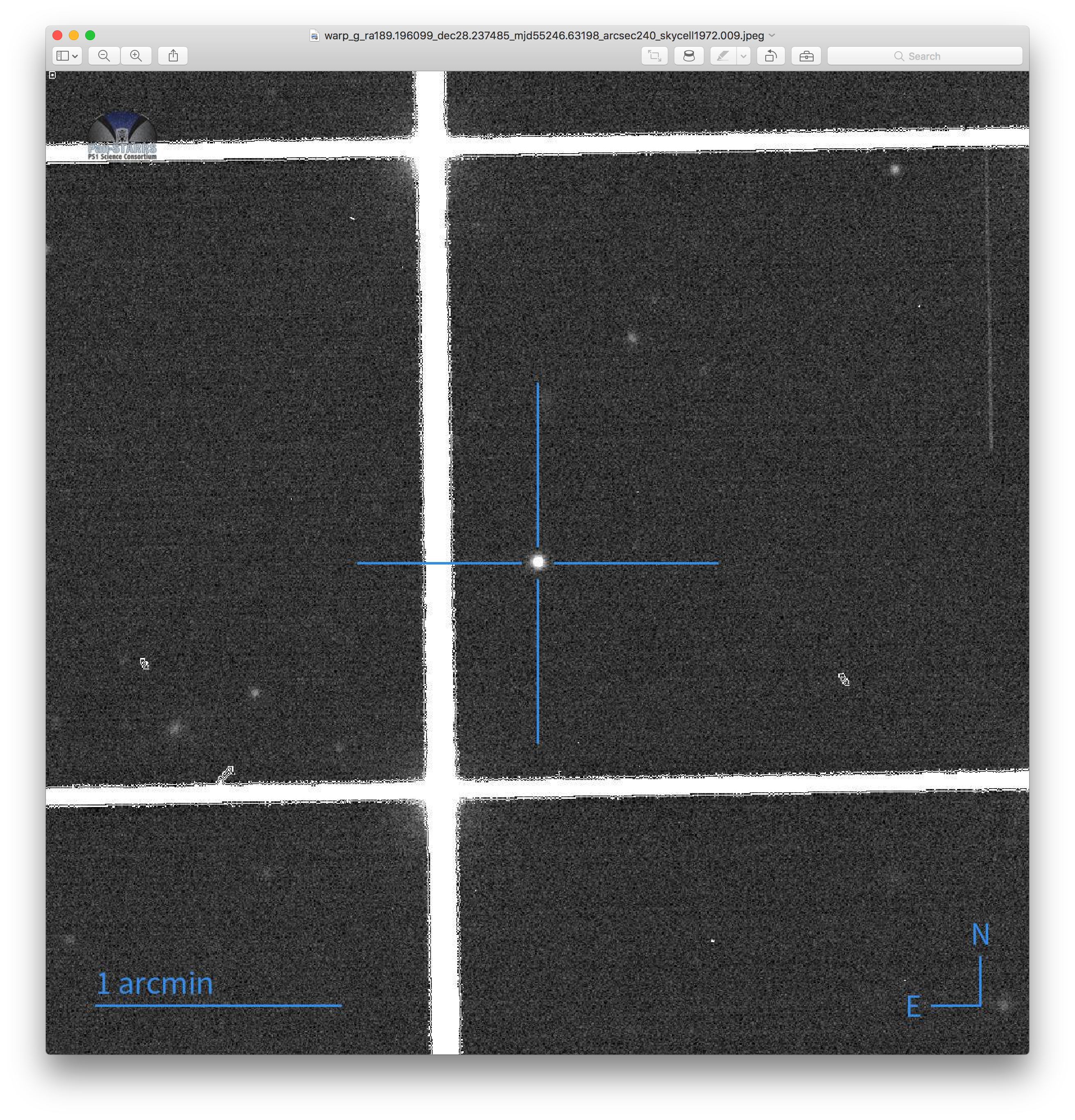Now that it’s possible to use PanStamps to download images within a given time-window we should be able to take list of PS1-MOPS detections for a given source and download the FITS images from the Pan-STARRS1 data archive. Consider this list of detections of a single TNO:
Which MJD?
One things I’ve noted during my tests of the Pan-STARRS1 data archive is that the MJD reported in the HTML table of returned warps is MJD-OBS; the time recorded at the start of the exposure. However the MJDs reported in the PS1-MOPS output files is MJD-MID; the time at the mid-point of the exposure. This makes matching specific PS1-MOPS detections with their associated warp frames a little tricky.
The best way to match an warp reported on the Pan-STARRS1 data archive against its MJD-MID value is probably to use PanStamps to select the warp with the latest MJD-OBS before MJD-MID. PanStamps v0.5.0 introduced the --closest option via the command-land which allows us to do just that. The following command will select and download the warp taken closest in time before MJD=55246.63228 at the selected sky-location:
panstamps -jF --closest=before --width=4 --filters=grizy --downloadFolder=~/Desktop/tno-01 189.1960991 28.2374845 55246.63228
and here’s the resulting jpeg with our target clearly in the centre:

But we’re not out of the woods yet! Occasionally a warp detection reported in the PS1-MOPS output does not get reported via the Pan-STARRS1 data archive for reasons unknown. If the associated warp doesn’t exist then PanStamps is still going to download the next (wrong!) warp reported closest in time before the requested MJD. So instead of passing simply a before value to the --closest flag it’s better to pass in a time-window in seconds like so:
panstamps -jF --closest=-120 --width=4 --filters=grizy --downloadFolder=~/Desktop/tno-01 189.1960991 28.2374845 55246.63228
This command will now only download the warp taken closest in time before MJD=55246.63228 at the selected sky-location if it is within 120 secs of the requested MJD. A warning is issued if an image is not found.
Scripting PanStamps
Let’s give this go and download all of the warp jpegs for the moving object reported in the PS1-MOPS output above. If you want to give this a go then grab the bash script here and run it from your machine1.
Here are the resulting jpegs; as you can see the target object is clearly detected at the centre of all of the images. Trying again with another (fainter) source, from the results we see that everything seems to be working as expected. Here’s the script for that last one:
For up-to-date PanStamps documentation, with install and usage instructions, see Read the Docs.
-
remember to access the warp images from the Pan–STARRS1 data archive you must run it from a machone with an IP address on their whitelist otherwise you can only access stacked images. I'm running this from within the QUB network. ↩